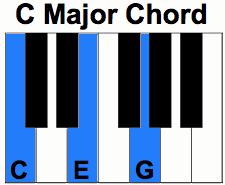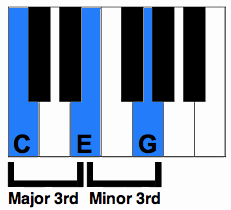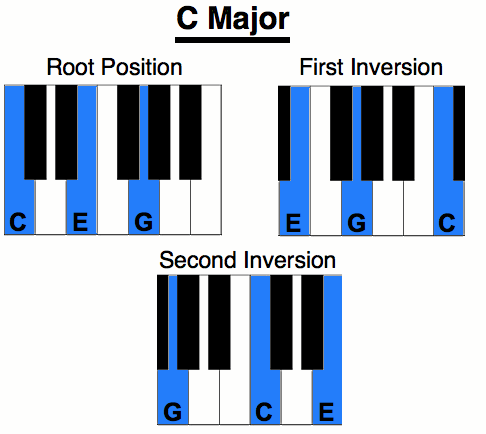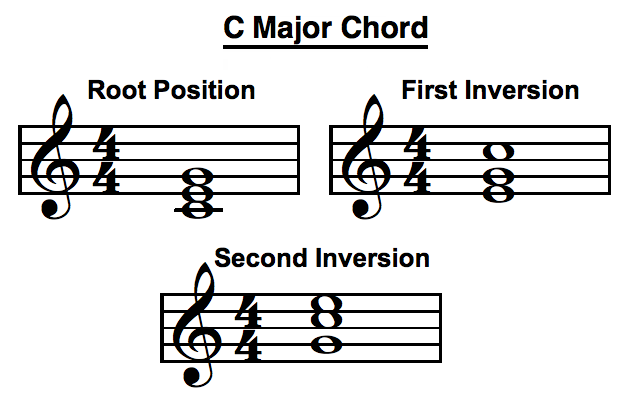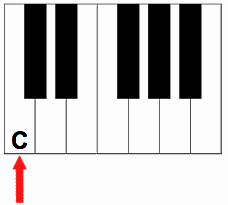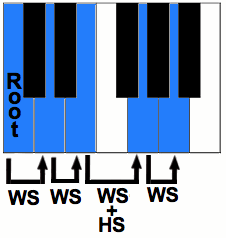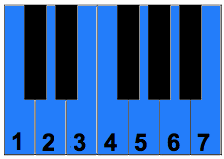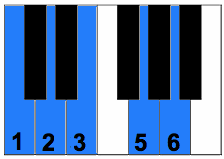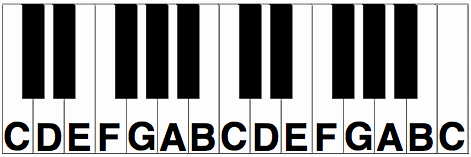Whole steps are the second smallest interval in music.
Don’t worry if you don’t know what an interval is. It simply means how far one note is from another note.
Now that doesn’t sound so bad does it?
In the previous lesson we learned about a semitone, or half step. We found that this kind of interval is the smallest interval in music and that it tells us to move one note to the left or right.
Now that we are ready to learn about whole tones, (just another name for whole steps) we just need to know that this is made up of a combination of two semitones.
A whole tone is made up of 2 half steps.
So, if you can move a half step then you can easily move a whole tone. All you have to do is move two half steps.
Let’s do one example.
If you start on C and move two half steps you would start on C and move to C#, then move from C# to D.
This is a simple example of moving two half steps to create a whole tone.
Check out the image below and see how the first half step moves from C to C#.
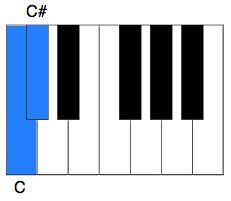
Now see the second half step moves from C# to the D.
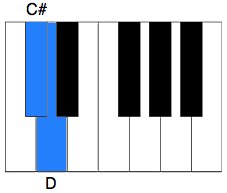
Using this method can help you to find whole steps all over the piano. If you move in two consecutive half steps you will create the whole tone.
Steps for Scales and Chords
I said earlier that whole tones and semitones are used as the foundation for building chords and scales. Once you learn thees two concepts you will then be able to use them to build hundreds of chords and scales instantly.
Scales and chords are made up of patterns of these steps.
Each chord has a unique formula that makes it unique. Once you learn the formula and can apply the whole tone-semitone pattern you will be able to build that chord in any key.
The same thing goes for scales.
For example, a Major Scale is made up of Whole-Whole-Half-Whole-Whole-Whole-Half.
If you know these steps it is easy for you to find a Major Scale in any key on the piano. Once you find the whole and half step pattern and you can use these steps to find the notes in any scale.
Whole Tone Scale
The whole tone scale is a scale that is made up of all whole movements.
This means that you are going to start on any note on the piano and them move seven whole tones. This is what the whole tone formula looks like.Whole-Whole-Whole-Whole-Whole-Whole-Whole
The image below shows the whole tone scale in the key of C
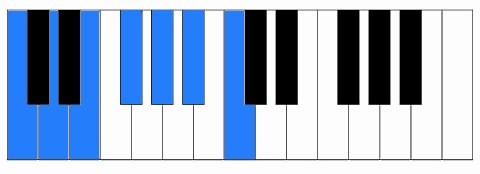
If you look closley at the image you will see that every labeled note is a whole tone from the previous note.
The whole tone scale is great practice for building scales using intervals.
If you still need more help with whole tones and using half steps and whole stepsto build chords, check out the link below. It explains exactly how to build these intervals along wth detailed instructions on how touse them to build chords.
Click here to build chords using intervals.
Lessons #7 – Major Scales
Back To Lesson #5 – Semitones
Go From Whole Steps Back to Lessons
Back to Home Page

